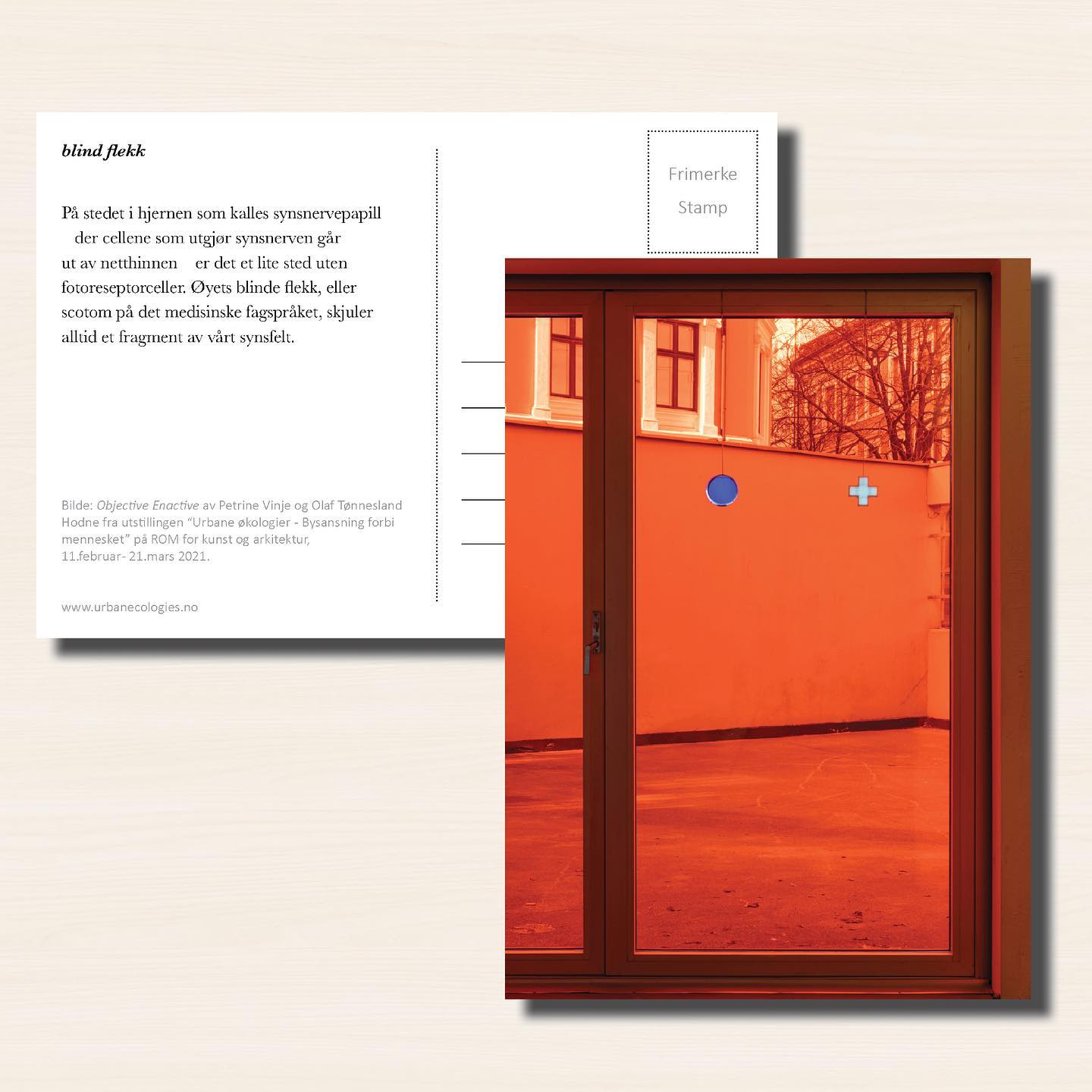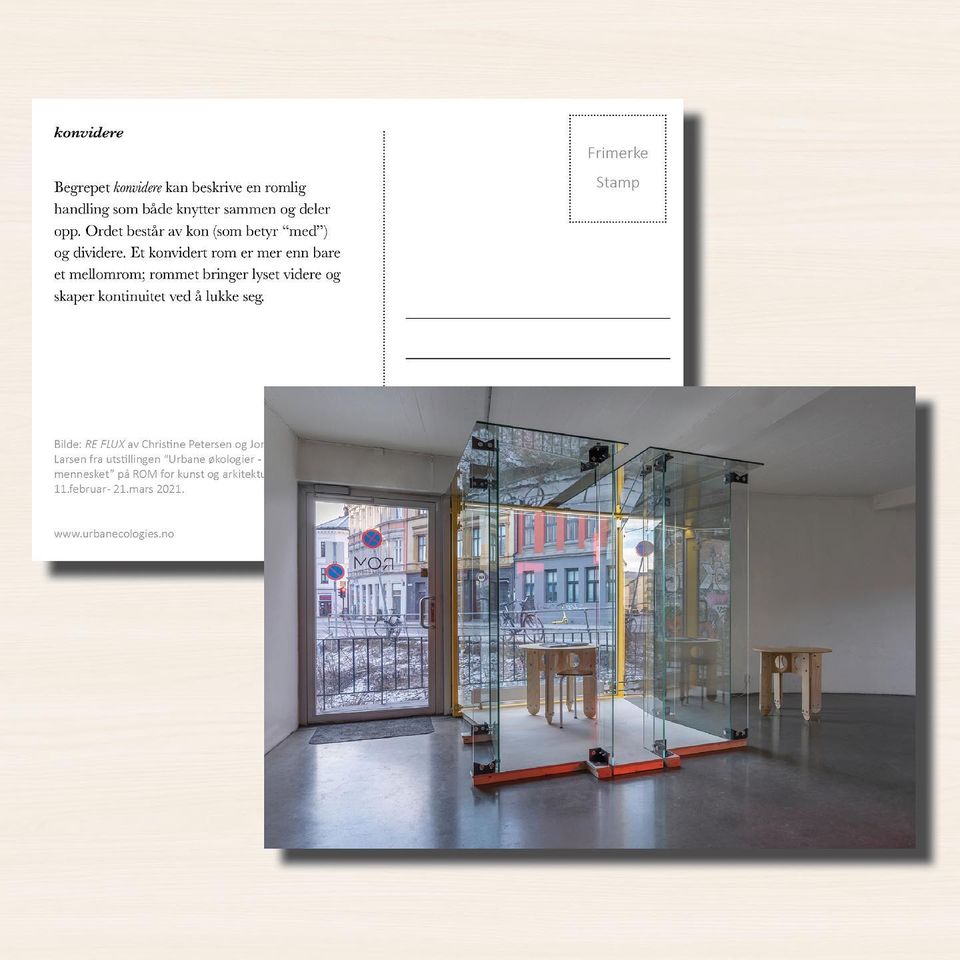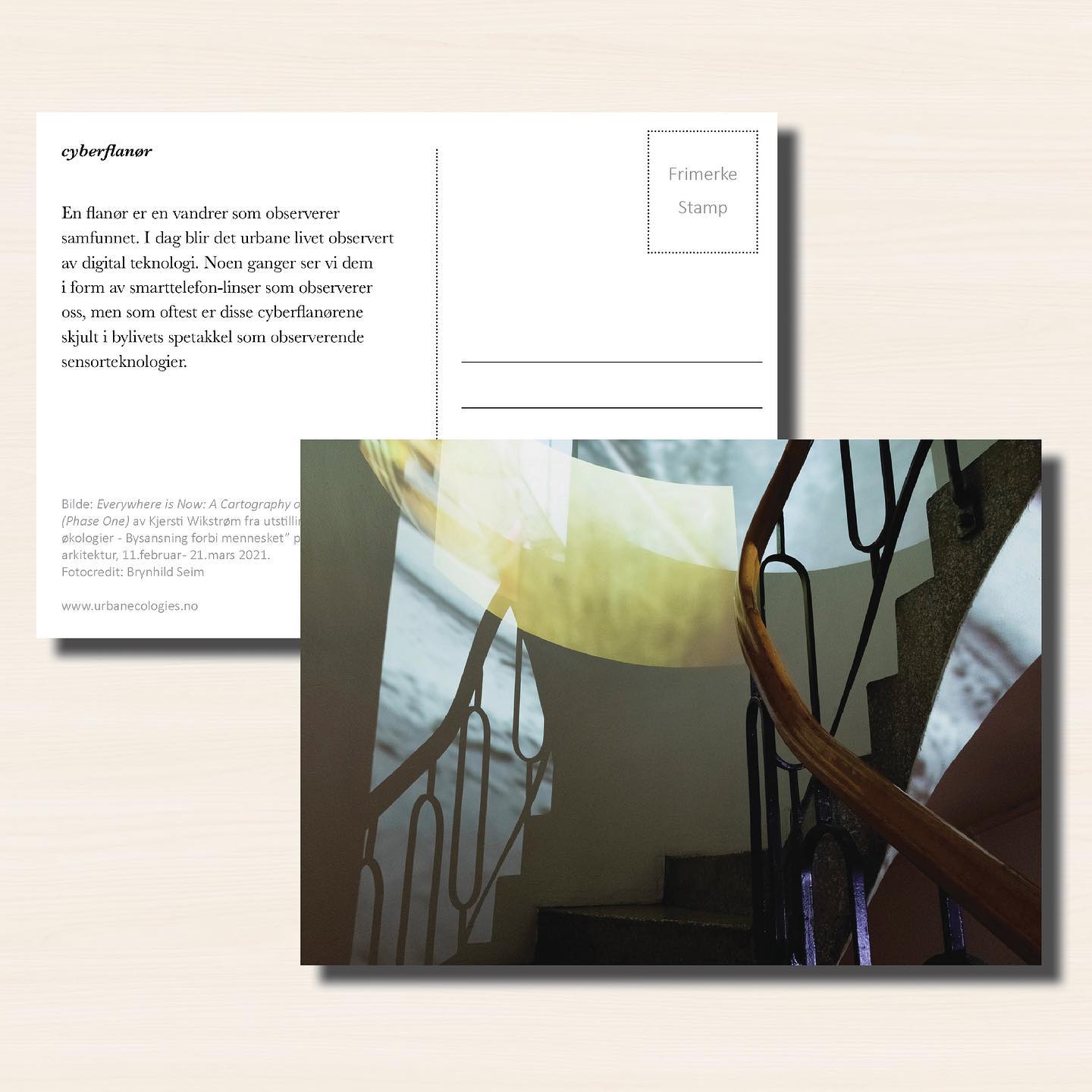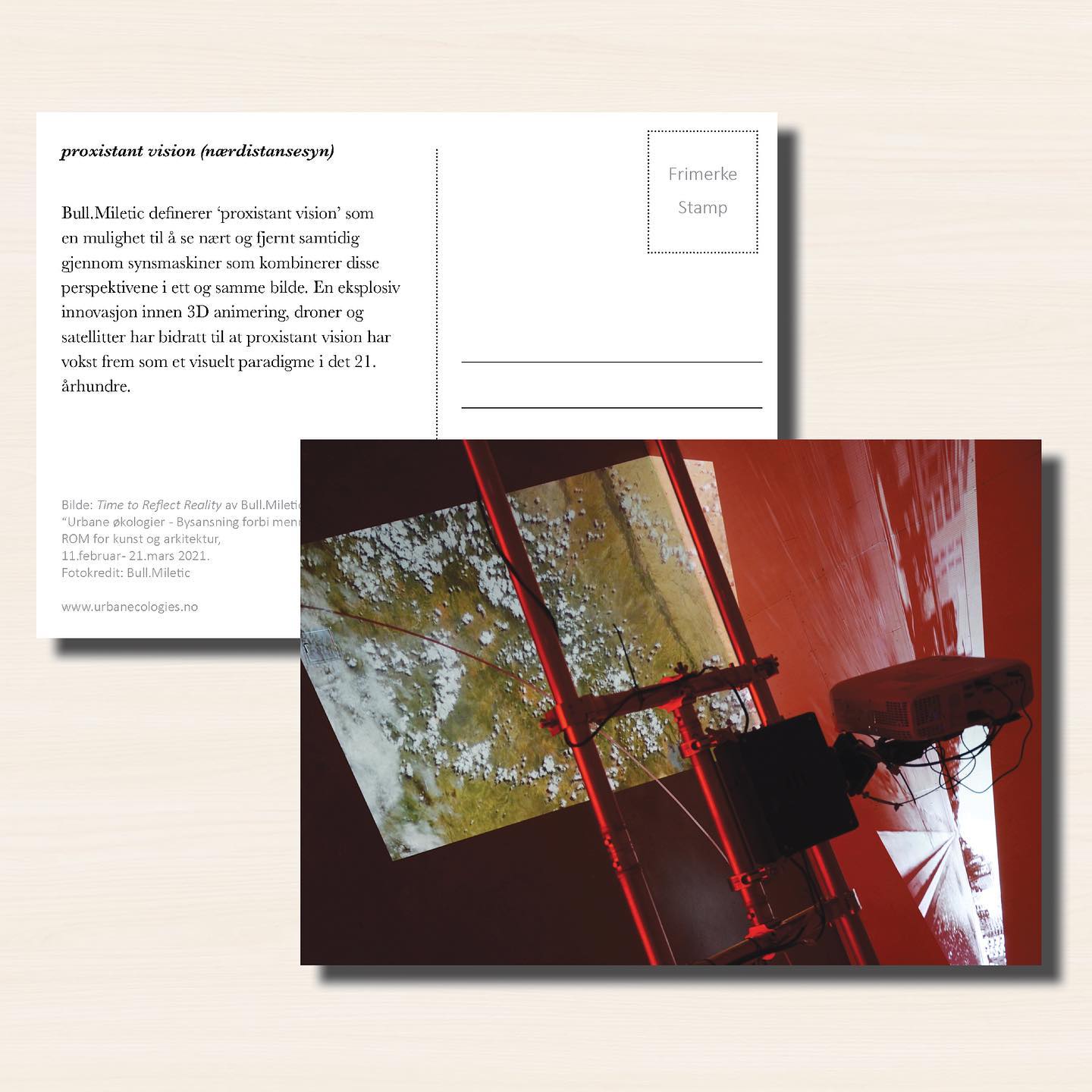The participants of the Urban Ecologies research collective come from various backgrounds and disciplines, contributing to the research project with different methodologies. The “Urban Ecologies Dictionary” was proposed by ROM for art and architecture as a tool for outreach and dissemination in light of the project's focus on reaching new audiences.
ROM’s dictionary project emerges from discussing the importance of defining terms — the need for a shared language and a common vocabulary as building blocks for productive discourse — as well as an act of making research accessible.
Together with ROM, the collective worked to identify and define key terms as well as difficult terminology relevant for individual works within Urban Ecologies. The dictionary reflects the various approaches each artist, architect, and art historian has developed around urban knowledge. Selected terms were published in the form of postcards as part of the text series ROM dictionary by ROM press.
Blind spot
How do we know that we see the world correctly? Light enters the eye by passing through the pupil and hitting the retina at the back. The retina is encased in light-sensing proteins, which transmit what they sense to the optic nerve. The optic nerve, in turn, relays that message to the brain. On the location called the optic disc, where the cells that compose the optic nerve exit the retina, there is one small location, a spot with no photoreceptor cells.
The blind spot (scotoma in the medical term) constantly hides a fragment from our vision. Petrine Vinje og Olaf Tønnesland Hodne suggests the blind spot as a biological glitch in the human body, and invites to explorations of it through the work Objective Enactive.
The scotomas are simply regions of reduced information within the visual field. Whatever shortfall there is about visual information, the brain fills in by looking at the surrounding picture, and as a result, we are never conscious of the existence of blind spots as we go about our day-to-day lives. This is, unless when they appear as transient or permanent sensory disturbances. Scotoma is known as the explanatory gap between the conscious and nonconscious. It illustrates the hard problem of science on consciousness, that of subjectivity and objectivity.

Cinéma trouvé
When you ride on the tram through the city and gaze out of the window, is this a form of cinema by other means? The experience evokes the bodily memory of a virtual movement in a moving image. The body is at rest while experiencing physical movement through space.
Bull.Miletic define the term cinéma trouvé (meaning “readymade cinema”) as a specific cinematic experience outside the conventional cinematic apparatus. With reference to Marcel Duchamp’s “objet trouvé,” the experience of cinéma trouvé is activated when one is looking out of the window while being transported by a mechanical vehicle, such as a tram.
Cinema trouvé has been a reoccurring preoccupation in Bull.Miletic’s earlier work, particularly in the project Heaven Can Wait (2001-ongoing). With Time to Reflect Reality at ROM, Bull.Miletic re-approach the cinéma trouvé phenomenon once again. This time as a an enactive lens through which urban knowledge about the city, as a site of media ecological development, can be studied and explored. In the installation, Bull.Miletic think of cinéma trouvé as a form of mapping. By collaborating with robotic technology in the exhibition space, Bull.Miletic experiment with the possibility of making alternative cartographies that trace possible links between modernist panoramic spectatorship (Walter Benjamin, Wolfgang Schivelbusch) and data-driven urban development.
Convided space
Living in the city is one of the most sustainable ways of life in 2021. Yet in the wake of COVID-19, the interior space of newer apartment buildings became too open and connected. How to create a separate room yet not hinder the daylight?
Christine Petersen and Jonas Gunerius Larsen have coined the term convision to describe a spatial programme that both connect and divide. Made up by the words con (meaning “with”) and divide, a convided space is more than an in-between space; it carries light through by closing itself off.

Cyber flâneur
A flâneur is a wanderer who observes society. The term is intimately connected to urban life at the start of modernity. Walter Benjamin describes the flâneur as an investigator of the city that observes the uncanniness of urban life from the outside: within the masses, but separated from them. Today the urban life is observed by digital technologies. Sometimes we see them in the form of enactive smart phone lenses that observe us, but most times the cyber flâneur hides in the masses as sensor technologies that investigate the spectacle of urban life.
Kjersti Wikstrøm’s phone is a cyber flâneur that gathers evidence of her daily life. The cyber flâneur’s machine vision observes the sense of human or non-human subjectivity and objectivity in a networked and hybrid reality, and then its lens captures this new form of subjectivity.

Data dreams
How does data sense the city? The word data comes from the Latin datum, meaning “thing given” often referring to the basis for calculation of a mathematical problem.
We live in a time in which the intimate, the experienced, the felt, dreams, the self, and the city are part of a greater network. What was previously called subjectivity, is now more complex writes Hito Steyerl: “as humans feed affect, thought, and sociality into algorithms, algorithms feed back into what used to be called subjectivity.”
If our imagination now feeds into algorithms and data now has become subjectivity, data must also have imagination and dreams.
Enactive lens
What do we see when looking through a lens? Is the outside world somehow mirrored into our minds when light penetrates the lens in our eyes? Do the smart phone camera merely receive and document the world passively? The notion enactive lens suggests otherwise.
Petrine Vinje uses the term enactive lens to describe a conscious sensing of the world through an objective (=lens) that brings forth the dynamic interaction between an acting organism with sensorimotor capacities and its environments. If we think about the lenses in and around us as enactive, this might lead to an awareness about how developments in the world is shaped by embodied action. Francesco Varela, Evan Thompson and Eleanor Rosch introduced the notion enaction in 1997 as an alternative to the Cartesian dualism—in which the mind and the body is thought of as separate.
Are all lenses enactive, even the lens in our smart phones? If so, it is an argument for technology as extensions of ourselves, that imitates and develops from the biological organism and takes part in the meaning-making as our companions.
Error
Within computation and cybernetics, an error is defined as an unknown mistake causing a deviation in the system. In more recent times, a software error entails unexpected crashes or the sudden termination of an app. Etymologically, the word error has its roots in the Latin errorem meaning “a wandering, straying, a going astray; meandering; doubt, or uncertainty.” It means a deviation from what is normal.
In other words, an error is a deviation from data that literally disrupts ongoing cybernetic loops.
Glitch
A mode of non-performance. It is “a failure to perform” or an outright refusal executed by the machine. The etymology of glitch finds it deep roots in the Yiddisch gletshn (to slide, glide, slip) or German glitschen (to slip). Glitch is thus an active word, one that implies movement and change from the outset; this movement triggers error.
The word as we now use and understand it was first popularized in the 1960s, as part of the rapid developments in the emergent American space program, for example in 1965: St.Petersburg Times reported that a glitch had altered the computer memory inside the US spacecraft Gemini 6. The newspaper described the word as “a spaceman’s word for irritating disturbances.”
In current published documents of cyberfeminism, the glitch is suggested as an opportunity to embrace what is not perfectly order, and to reprogram systems in the virtual places between living bodies and data bodies.
Proxistance
Bull.Miletic observe that the ongoing surge in aerial imaging and remote sensing technologies such as drones and satellites has introduced a new visual paradigm.
Most prominently exemplified by Google Earth’s digital ride between globe view and street-level detail, this paradigm combines proximity and distance in a single image or across a dynamic flight or zoom. Combining the concepts proximity and distance, proxistance is developed in order to trace out the multiple paths and genealogies of the proxistant overview-detail effect as an intensification of the 18th-century mapping impulse and the old dream of total vision. Is the current proliferation of proxistant data visualization and mapping an indicator of how knowledge through vision continues to operate as a major attractor in a topologically organized society of control?
There are also ways of thinking about proxistance as a form of feminist epistemology. Here, proxistance is the constant move between deep insight and broad overview, narrow focus and wide-reaching attention, knowledge of the detail, and seeing it in a broader context. Importantly, and in opposition to the paradigm outlined above, the detail one studies is always becoming and changes for every move one makes.







